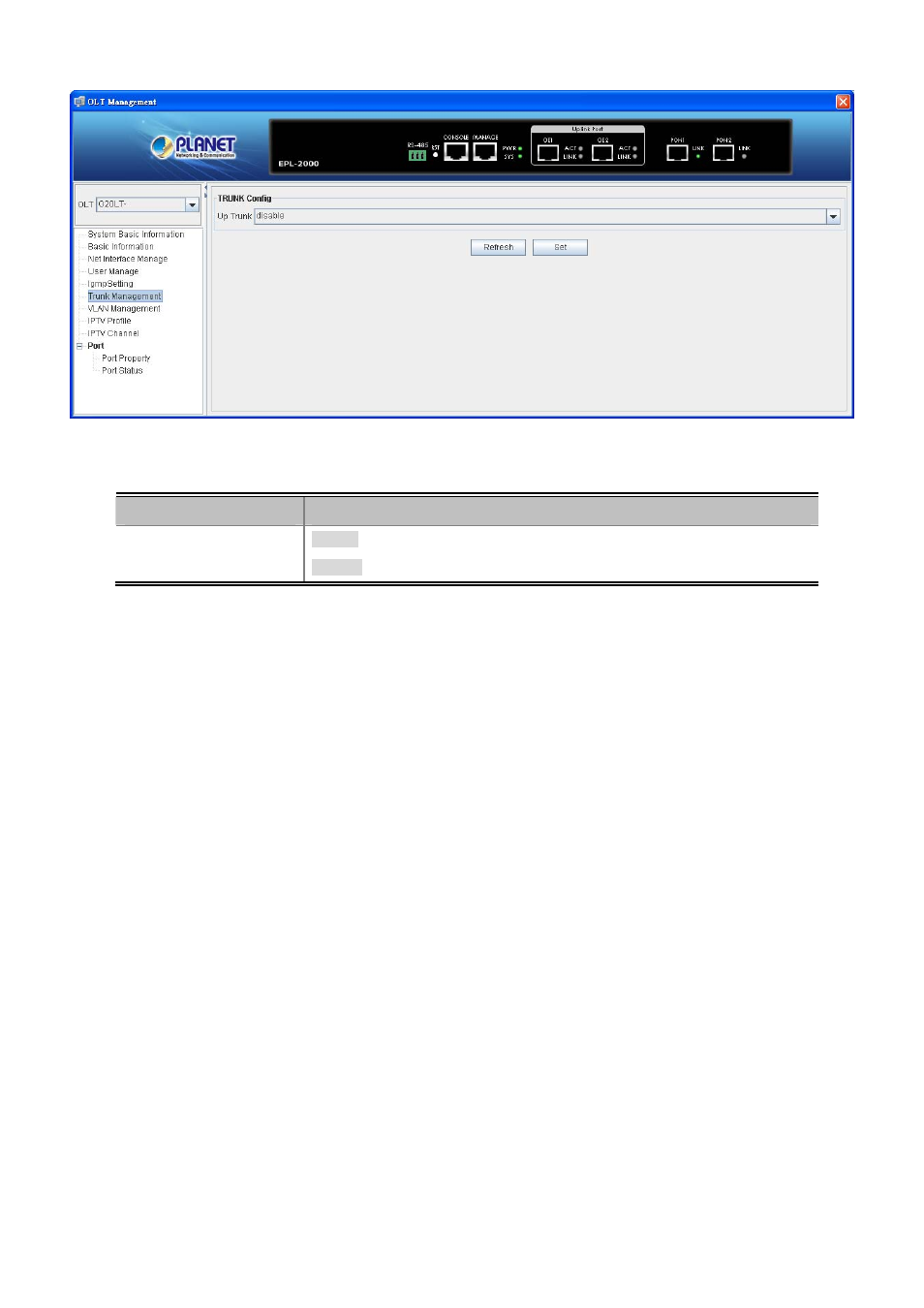7 vlan management – PLANET EPL-2000 User Manual
Page 50

User’s Manual of EPL-2000
Figure 4-27
Trunk Management Screen
The window includes the following fields:
Object
Description
Up Trunk:
Enable
: Trunk function Enable.
Disable
: Trunk function Disable.
4.2.7 VLAN Management
4.2.7.1 VLAN Overview
A Virtual Local Area Network (VLAN)
is a network topology configured according to a logical scheme rather than the physical
layout. VLAN can be used to combine any collection of LAN segments into an autonomous user group that appears as a single
LAN. VLAN also logically segments the network into different broadcast domains so that packets are forwarded only between
ports within the VLAN. Typically, a VLAN corresponds to a particular subnet, although not necessarily. VLAN can enhance
performance by conserving bandwidth, and improve security by limiting traffic to specific domains.
■ IEEE 802.1Q Standard
IEEE 802.1Q (tagged) VLAN
are implemented on the Switch. 802.1Q VLAN requires tagging, which enables them to span the
entire network (assuming all switches on the network are IEEE 802.1Q-compliant).
VLAN allows a network to be segmented in order to reduce the size of broadcast domains. All packets entering a VLAN will only
be forwarded to the stations (over IEEE 802.1Q enabled switches) that are members of that VLAN, and this includes broadcast,
multicast and unicast packets from unknown sources.
VLAN can also provide a level of security to your network. IEEE 802.1Q VLAN will only deliver packets between stations that are
members of the VLAN. Any port can be configured as either tagging or untagging.:
The untagging feature of IEEE 802.1Q VLAN allows VLAN to work with legacy switches that don't recognize VLAN tags
50
